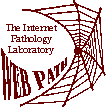Clinical History:
- A 3 year old boy has had multiple episodes of pneumonia with Staphylococcus aureus and urinary tract infections with beta-hemolytic Streptococcus in the past year. He had been born at term to a 22-year-old woman. He was noted at birth to have no congenital anomalies. He did well during infancy. His only sibling, a 5-year-old sister, has had no major medical problems. On physical examination he has blond hair and blue eyes (everyone else in the family has a darker complexion). He has contusions of multiple ages on his extremities. A CBC shows Hgb 13.8 g/dL, Hct 41.5%, MCV 85 fL, Platelet count 176,000/microliter, and WBC count 4,080/microliter with differential count of 45 segs, 2 bands, 40 lymphs, and 13 monos. Serum quantitative immunoglobulins show IgA 71 mg/dL (16 - 83 mg/dL), IgG 901 mg/dL (282 - 1026 mg/dL), and IgM 109 mg/dL (39 - 142 mg/dL). His peripheral blood smear is shown.
- Describe the laboratory findings. What conditions can be included or excluded?
There is a mild neutropenia with normal lymphocyte numbers and normal immunoglobulin levels. The history of bacterial infections and the giant granules suggests a disorder of neutrophils.
- What abnormality is present on the smear?
There are abnormally large neutrophil granules.
- What is the most likely diagnosis?
The distinctive morphology is characteristic for Chediak-Higashi syndrome.
- What is the underlying abnormality?
Mutation occurs in the LYST gene on chromosome 1q42 that encodes for a protein involved in intracecellular trafficking of proteins. Microtubules fail to form properly, and the neutrophils can't get their act together under chemotactic stimuli. There is abnormal fusion to form giant lysosomal granules that fail to function. Peripheral blood leukocytes have giant granules. Soft tissue abscesses with Staphylococcus aureus are common. Other cells affected by this disorder include platelets (bleeding), melanocytes (albinism), Schwann cells (neuropathy), NK and cytotoxic T cells (aggressive lymphoproliferative disorder).
- What other tests could be helpful in distinguishing other related conditions?
Flow cytometric analysis of neutrophils for CD11/CD18 will demonstrate CD18 deficiency in cases of leukocyte adhesion deficiency, which is distinguished also by a leukemoid reaction without purulent exudate at sites of infection. Flow cytometry can also be employed to measure the respiratory burst of neutrophils, which will be abnormally low in patients with chronic granulomatous disease from mutations in NADPH oxidase; CGD is distinguished by normal neutrophil numbers and by presence of macrophages but few neutrophils at sites of infection.
|
|



